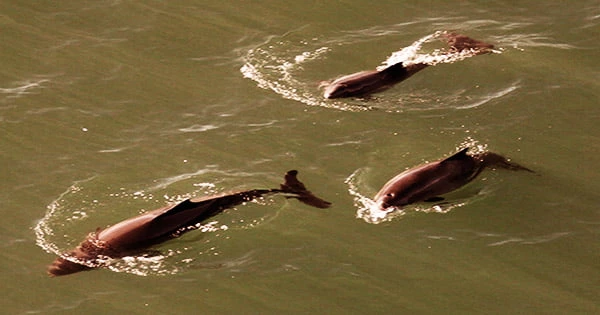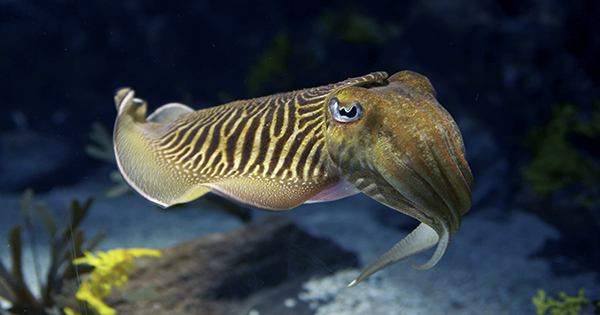Even though the noise from these industrial operations generally scares the whales away, a massive gathering of fish tempts harbor porpoises to look for food around oil and gas rigs. As a result, decommissioned platforms in the North Sea could be used as artificial reefs.
The harbor porpoise is a shy creature that is usually observed in pairs or threes. They are most usually found in bays, estuaries, harbors, and fjords, and favor coastal regions. Harbor porpoises are particularly vulnerable to gill nets and fishing traps, pollution, and other forms of human interference, such as underwater noise, because they favor coastal areas.
The harbor porpoise is one of the smallest whales and the only one that breeds in Danish waters with certainty. They like shallow water, less than 500 feet deep, and can be found in harbors and bays, as their name suggests. They are also known to frequent inland waters, including rivers, estuaries, and tidal channels.

The harbor porpoise was designated as a protected species in Danish waters in 1967, and researchers from Aarhus University in Denmark have previously demonstrated that ship noise and seismic investigations of the seabed scare the porpoises away.
According to a new study, there are more porpoises seeking for food at the largest Danish oil platform, Dan F, in the North Sea, during certain times of the year than just three to ten kilometers away.
21 listening stations in the North Sea
At the bottom of the North Sea, a team of researchers installed 21 listening stations. The innermost listening station was instantly deployed beneath the massive Dan F-oil and gas platform, while the furthest station was placed 25.6 kilometers away.
Near the old oil well Ragnar, which no longer produces oil, one of the several listening stations was positioned halfway between the inner and outermost stations.
The listening stations were left in the North Sea for two years to record all sounds below the water’s surface, including noise from ships and platforms, as well as the sounds produced by porpoises for orientation and the so-called “buzz sounds,” which indicate that the whales are actively hunting for food.
The signals from porpoises were far less frequent during this particular period, but the buzz sounds revealed that the porpoises still searched for fish around the Dan-F platform and the Ragnar well from February to June. The noise from the platform is the same all year round, so we interpret the absence of porpoises as a change in the behavior or the presence of fish.
Jonas Teilmann
“With this study, we’re presenting the first investigation of the presence and feeding activity of porpoises throughout the year around oil platforms, as far as we know,” says senior researcher Jonas Teilmann from the Department of Bioscience, Aarhus University, Denmark, who headed the investigations.
The new findings were recently published in the British journal Ecological Solutions and Evidence, and the researchers were taken aback by the conclusions of the several data sets.
Food attracts more than noise scares
“During the six months from July to January, we heard more porpoises searching for food around the two installations, the Dan-F platform, and the Ragnar well, than we did in control areas located 6 and 25 kilometers away from Dan-F. This was even as high as the highest porpoise activity we have seen for Natura 2000 sites in the inner Danish waters,” says Jonas Teilmann.
According to the researchers, the structures operate as natural reefs, providing good living circumstances for porpoises by attracting a variety of plants and animals that colonize the structures, providing hiding places and additional food for the fish.
Harbor porpoises have a tiny, sturdy body with a short, blunt mouth and a triangular dorsal fin that is modest in size. Their backs are dark gray, with lighter gray intermediate hues on the sides.
They have a dark gray chin patch and a white belly and throat. Females have a small advantage over males in terms of size. Schooling fish like as herring and mackerel are the major diet of harbor porpoises. They will eat squid and octopus on occasion.
Furthermore, fishing is restricted within a 500-meter radius of the platforms, ensuring that the seabed remains untouched by trawling. Porpoises were heard seeking for food up to 800 meters away from the Dan-F platform, according to the researchers.
In fact, the researchers estimate that there were up to twice as many porpoises below the platforms than were recorded by the acoustic recorders because the noise from the platform typically drowns out the porpoises’ sounds. The roar didn’t stop until we were 12 kilometers away from the platform.
The researchers are unable to say whether the porpoises gradually become accustomed to the noise from the drilling platforms, but it is obvious that the drive to obtain food outweighs the noise’s deterrent effect.
“Our data show that the porpoises ignored the annoyance of the underwater noise to exploit the greater availability of food around the fixed installations,” says Jonas Teilmann.
Should artificial installations be left in place?
It is critical for porpoises to consume as much food as possible throughout the months of July to January in order to build up a thick covering of blubber that will keep them warm throughout the winter. The mothers also require energy during these six months in order to produce enough milk for their calves.
In the months of February to June, however, the researchers discovered that there are much less porpoises hunting for food around the manmade constructions.
“The signals from porpoises were far less frequent during this particular period, but the buzz sounds revealed that the porpoises still searched for fish around the Dan-F platform and the Ragnar well from February to June. The noise from the platform is the same all year round, so we interpret the absence of porpoises as a change in the behavior or the presence of fish,” says Jonas Teilmann.
The researchers were able to hear that the whales were more actively seeking for food at night than during the day, as far as 800 meters from the Dan-F platform, because they captured sounds from porpoises around the clock.
The researchers were surprised, but they already knew that at night, light attracts zooplankton, squids, and fish to the upper water column. This sets in motion a well-oiled food chain that culminates in the porpoises. This could explain why the Dan-F platform was more appealing at night, but Regnar, which had no light, had more activity during the day.
All disused oil and gas installations must be removed from the North Sea, according to the OSPAR Convention, which preserves the North Sea. The researchers are now suggesting that the old facilities be kept in place to act as new artificial reefs in the North Sea, a proposal known as “Rigs-to-Reef.”
Platforms and other installations can help to increase biodiversity and diversity in regions where trawling has devastated the reefs or where the original stone reefs have been removed and repurposed for land-based construction projects. The studies were financed by Total E&P Danmark A/S.
















